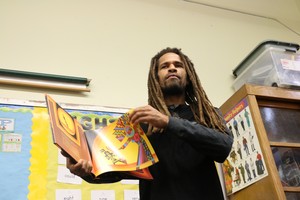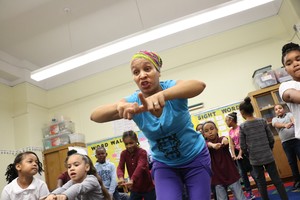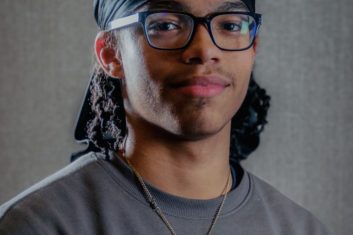We are the Ultimate! We are the Ultimate! And We’re Ro… Ro… Rockin’s It!”
-Jashua & Adia’s Closing Ritual at PS 676 in Red Hook
Since December I have been interning at PS676 in Red Hook, Brooklyn. I have been observing Teaching Artists Jashua Sa-Ra and Adia Whitaker teach dance and poetry to second and third grade students. This has been a very valuable experience for me for several reasons. I have learned the following lessons below based on my weekly observation.

Working with other Teaching Artists
During my first day interning, I immediately notice how Jashua and Adia work together. At different points in the lesson, each Teaching Artist has the chance to lead and assist. Because they work like this, I believe the class runs very smoothly and helps the students learn better. I love being exposed to this as an example of how to work with others because there is a nice balance between Jashua and Adia where each person plays an important part in conveying the lesson.
Creative Opening and Closing Rituals and Class Management Tools
In Jashua and Adia’s class the opening ritual is Little Sally/Jackie Walker. I observed that this opening ritual provides community building because everyone in the classroom sings the song. It provides routine because Jashua and Adia lead the opening ritual at the start of each class. Little Sally/Jackie Walker also provide a way for student’s to take a creative risk and improv a movement in front of everyone (the class copies their movements). There is so much growth already happening during the opening ritual.


The closing ritual is a call-and-response that Jashua leads. I noticed how animated he is in delivering the ritual, which reminds me how much energy can impact a class. Great energy all the way to the end of class can make a big difference. Many times Jashua calls on one of the students to do the closing ritual. I feel like this also fosters creative risk taking, which helps the student get comfortable and confident in using their voices.
As far as class management, I really like how Adia creatively incorporates using the body and voice as a way to gain back student’s attention. Usually in some classes I work in, I use clapping to gain the student’s attention. But, what I have observed about Adia’s call and response is that it is much more engaging.


Putting Movements to Words
The two biggest lessons I have learned so far when it comes to teaching dance to primary school aged children is to break it down and also associate a movement with a word when teaching poetry or any dance with lyrics. Looking back, I’m not sure why this didn’t dawn on me but I’m glad I’ve had this internship experience and other experiences because I understand that putting movements alongside words makes it easier to teach a dance.
One lesson that really helped me understand how to teach dance and poetry is when students were separated into four groups and each group was given a season; winter, spring, summer and fall. In groups, the students had to come up with four words that described the group’s season. I worked with Fall and some of the students came up with “Halloween”, “Leaves”, “Costume” and “Orange”. Afterward, they created a movement for each word. Adia practiced with each group, having them read their poems while doing the movements at the same time. After a few more times practicing, the students stood in front of the class and performed their poems.
I can’t say enough about having the opportunity to intern. Although I only wrote about a few lessons I have learned, I have gained so much insight into teaching effectively.
-Simone Johnson, Dancer, TATIP Trainee



